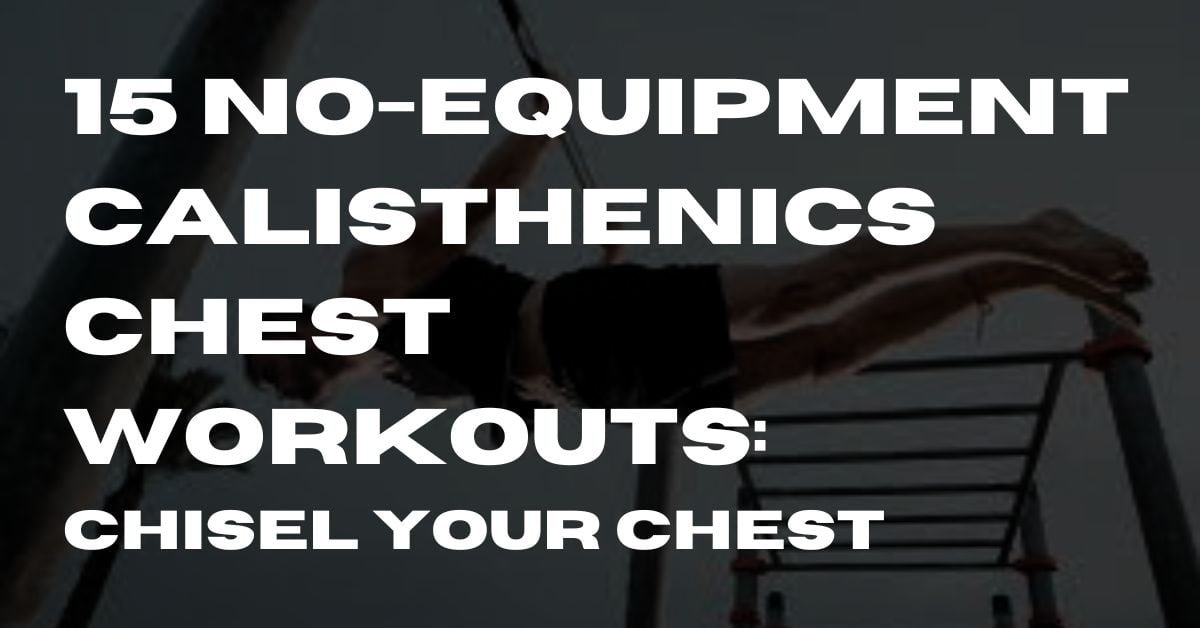Are you tired of expensive gym memberships and fancy equipment, yet still longing for a sculpted, powerful chest?
Well, what if I told you that you can achieve that dream physique without spending a dime on weights or machines?
Welcome to the world of bodyweight workouts, where all you need is your determination and the right exercises.
In this article, we’re diving headfirst into 15 Calisthenics chest workouts that require absolutely no equipment.
So, whether you’re a fitness enthusiast looking to switch things up or a beginner wanting to build a strong chest, let’s embark on this journey together and unlock the power of bodyweight training.
Table of Contents
Understanding The World of Calisthenics
What is Calisthenics?
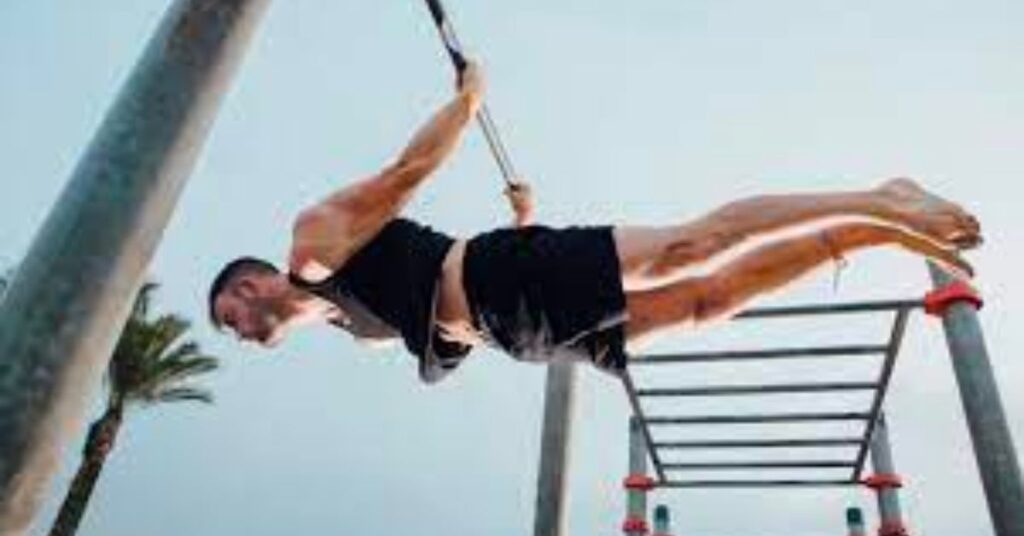
Calisthenics, often referred to as “bodyweight workouts,” is a fitness discipline that’s as straightforward as it is effective.
Picture this: no weights, no machines, just you and your body. It’s about harnessing the power of your physique to build strength, endurance, and flexibility.
Calisthenics workouts encompass a wide range of exercises, including push-ups, pull-ups, squats(PPL Calisthenics Split), planks, and more.
These movements challenge your muscles, improve your balance, and enhance your overall fitness without the need for any fancy equipment.
It’s a holistic approach to health and fitness that’s been around for ages and continues to gain popularity for its simplicity and undeniable results.
If you’re looking to get fit, boost your strength, and do it all with just the weight of your own body, then calisthenics is your go-to choice.
For more information on the benefits and history of calisthenics, you can check out reputable sources like Men’sHealth and MedicalNewsToday.
Benefits of Calisthenics
It’s time to uncover why this age-old fitness approach is gaining more popularity than ever before.
Here are seven unique points highlighting the advantages of incorporating calisthenics into your fitness routine:
Total Body Strength:
Calisthenics isn’t just about working one muscle group at a time; it’s about full-body engagement.
Research published in the “Journal of Strength and Conditioning Research” has shown that exercises like push-ups and squats activate multiple muscle groups simultaneously, promoting overall strength and muscle development.
So, you’re not just getting stronger; you’re getting stronger all over.
Enhanced Functional Fitness:
Calisthenics exercises mimic real-life movements, making you functionally fit for everyday tasks.
A study in the “Journal of Sports Science & Medicine” (2017) found that calisthenics training improved participants’ ability to perform daily activities with ease, from lifting groceries to climbing stairs, reducing the risk of injury.
Minimal Equipment, Maximum Convenience:
One of the beauties of calisthenics is its simplicity.
You don’t need a gym packed with machinery or a garage filled with weights.
All you require is your body and maybe a pull-up bar or parallel bars for certain exercises.
This makes calisthenics highly accessible and budget-friendly.
Improved Core Stability:
A strong core is essential for good posture and balance.
Calisthenics workouts engage your core muscles continuously.
A study in the “ Journal of Back and Musculoskeletal Rehabilitation” (2006) found that bodyweight exercises like planks and leg raises effectively strengthened core muscles, contributing to better stability.
Injury Prevention:
Unlike some weightlifting exercises that may put stress on joints and tendons, calisthenics is generally considered low-impact.
The “Journal of Strength and Conditioning Research” (2018) reported that calisthenics exercises like bodyweight squats have a lower risk of injury compared to heavy weightlifting.
Adaptability and Progression:
Calisthenics workouts are suitable for all fitness levels.
Whether you’re a beginner or an advanced athlete, you can adapt exercises to match your skill level.
Over time, you can increase repetitions, try advanced variations, or use additional resistance to continually challenge yourself.
Mental Wellness:
Physical fitness often goes hand-in-hand with mental well-being.
Engaging in calisthenics can boost your mood and reduce stress.
A study in the “British Journal of Sports Medicine” (2017) found that bodyweight exercises led to improvements in participants’ mental health and self-esteem.
Why Calisthenics for Your Chest Workout?
Calisthenics, also known as bodyweight workouts, offers a straightforward and efficient way to build a strong chest.
Unlike traditional weightlifting, calisthenics requires no costly equipment or gym memberships, making it accessible to all.
Whether you’re a beginner or a seasoned fitness enthusiast, this approach caters to everyone.
What makes calisthenics particularly appealing is its emphasis on functional strength.
It engages multiple muscle groups simultaneously, ensuring that the strength you gain applies to real-world activities.
Plus, it’s gentle on your joints, reducing the risk of injuries that can occur with heavy weightlifting.
Calisthenics provides a range of chest exercises, from basic push-ups to advanced variations like one-arm push-ups.
This versatility allows you to start at your own pace and progressively challenge yourself as you get stronger.
Moreover, calisthenics promotes balanced chest development by engaging not only your pectorals but also your shoulders and triceps.
This comprehensive approach results in a well-rounded chest physique that many desire.
Proper Form and Common Mistakes
Let’s dive into the world of proper form in calisthenics and explore some common mistakes to avoid.
We’ll also throw in some insider tips for weight loss success with calisthenics.
Mastering Proper Form in Calisthenics: Your Key to Success
Calisthenics, the art of bodyweight workouts, offers a fantastic path to fitness and strength.
But just like any exercise regimen, doing it with proper form is crucial for optimal results and injury prevention.
Let’s break it down:
- Push-Ups Done Right: When doing push-ups, maintain a straight body line from head to heels. A common mistake is letting your hips sag or sticking your butt up. Keep those core muscles engaged to protect your lower back.
- Pull-Ups and Common Errors: During pull-ups, avoid excessive swinging or using momentum to lift yourself. Focus on controlled movements, pulling your chest towards the bar. It’s about quality over quantity.
- Squatting Safely: In squats, ensure your knees don’t extend beyond your toes. This safeguards your knees and promotes proper muscle engagement. Don’t rush; aim for a full range of motion.
- The Plank’s Secret: Planks might seem simple, but they’re a goldmine for core strength. Maintain a straight line from head to heels and avoid letting your hips droop. Breathe steadily; holding your breath doesn’t help.
- Pushing the Limit: One of the most common calisthenics mistakes is pushing too hard too soon. Progression is the key. Start with basic exercises and gradually advance. Your body needs time to adapt and grow stronger.
Insider Tips for Weight Loss Success with Calisthenics
Calisthenics isn’t just about building muscle; it’s also a fantastic tool for weight loss.
Here are some insider tips to make the most of your calisthenics journey:
- High-Intensity Interval Training (HIIT): Incorporate HIIT into your calisthenics routine. It’s a proven way to torch calories and accelerate fat loss. Mix short bursts of high-intensity exercises with brief rest periods.
- Stay Consistent: Weight loss with calisthenics is all about consistency. Aim for regular workouts, at least 3-4 times a week. Be patient; results will come.
- Diet Matters: Combine calisthenics with a balanced diet. Focus on lean proteins, whole grains, and plenty of veggies. Proper nutrition complements your workouts for better weight loss results.
- Hydrate Well: Don’t forget the importance of hydration. Drinking enough water helps with digestion, metabolism, and overall weight management.
- Rest and Recovery: Give your body time to recover. Adequate sleep and rest days are essential. Overtraining can stall your progress.
The 15 Calisthenics Chest Workouts
1. Push-Ups
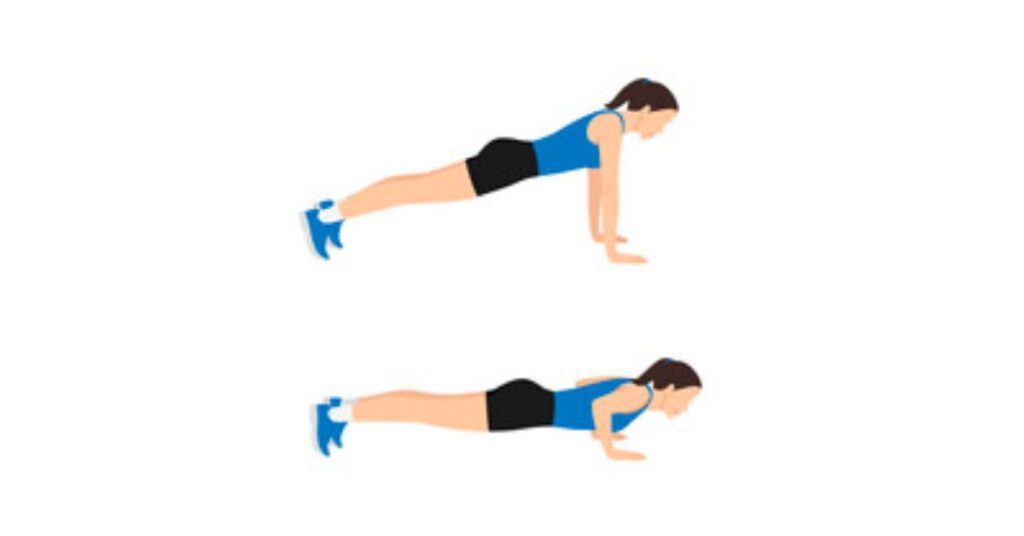
Steps:
- Start in a plank position with your hands under your shoulders.
- Lower your body until your chest nearly touches the ground.
- Push back up to the starting position.
Benefits:
- Works chest, shoulders, and triceps.
- Enhances core stability.
- Excellent for overall upper body strength.
2. Wide-Grip Push-Ups

Steps:
- Assume the push-up position with your hands placed wider than shoulder-width apart.
- Perform push-ups as usual.
Benefits:
- Focuses on chest and shoulder muscles.
- Variability in hand placement adds diversity to your workout.
3. Diamond Push-Ups
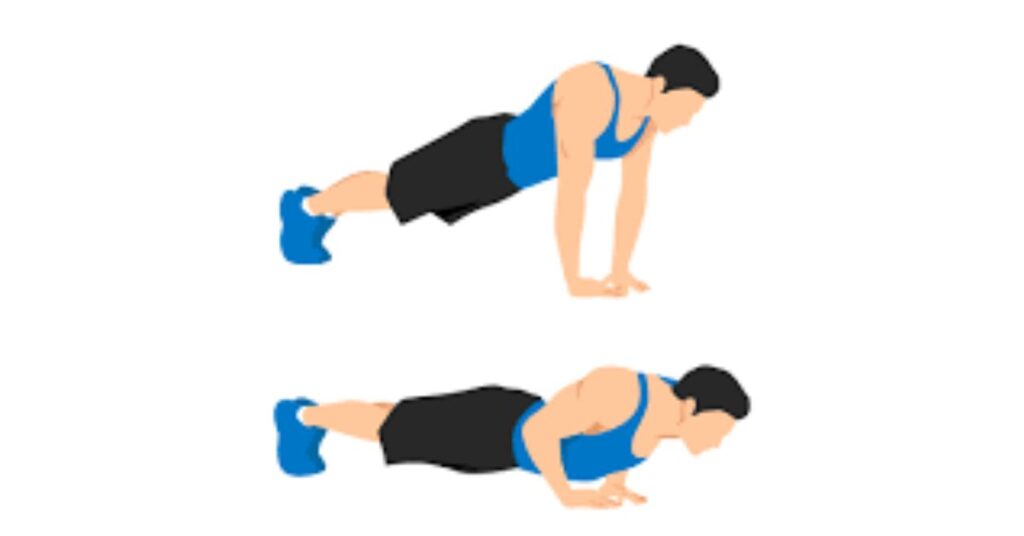
Steps:
- Place your hands close together beneath your chest, forming a diamond shape.
- Perform push-ups with your hands in this position.
Benefits:
- Targets triceps and inner chest muscles.
- Increases triceps strength.
4. Decline Push-Ups

Steps:
- Elevate your feet on a sturdy surface like a bench or step.
- Perform push-ups with your body on a downward incline.
Benefits:
- Emphasizes upper chest development.
- Adds challenge to the standard push-up.
5. Incline Push-Ups
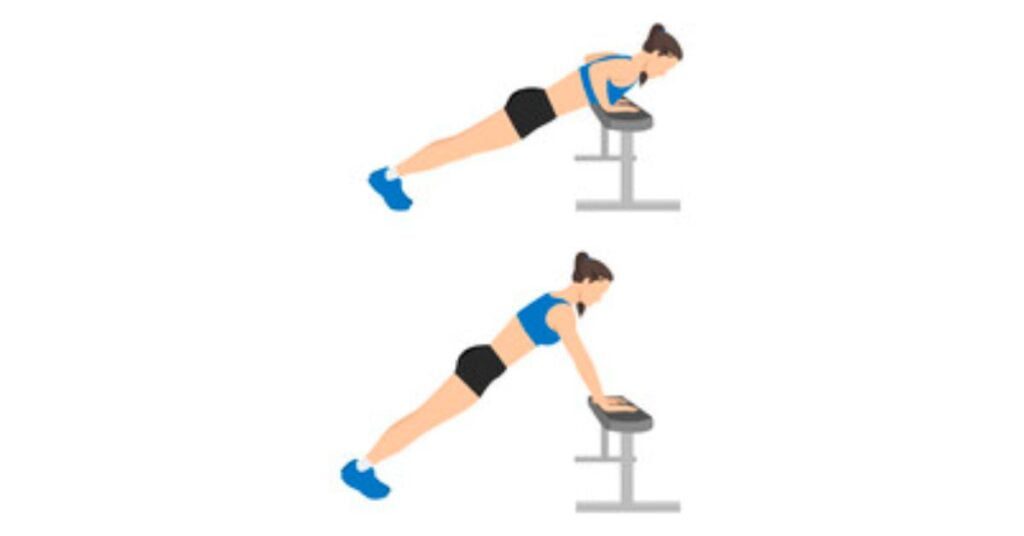
Steps:
- Place your hands on an elevated surface (e.g., a bench).
- Perform push-ups with your upper body in a slightly inclined position.
Benefits:
- Focuses on the lower chest and reduces intensity.
- Great for beginners or those recovering from injuries.
6. Pseudo Planche Push-Ups
Steps:
- Lean forward with your hands placed farther back.
- Perform push-ups with your torso and feet off the ground.
Benefits:
- Engages chest and shoulders intensely.
- Enhances balance and body control.
7. Archer Push-Ups
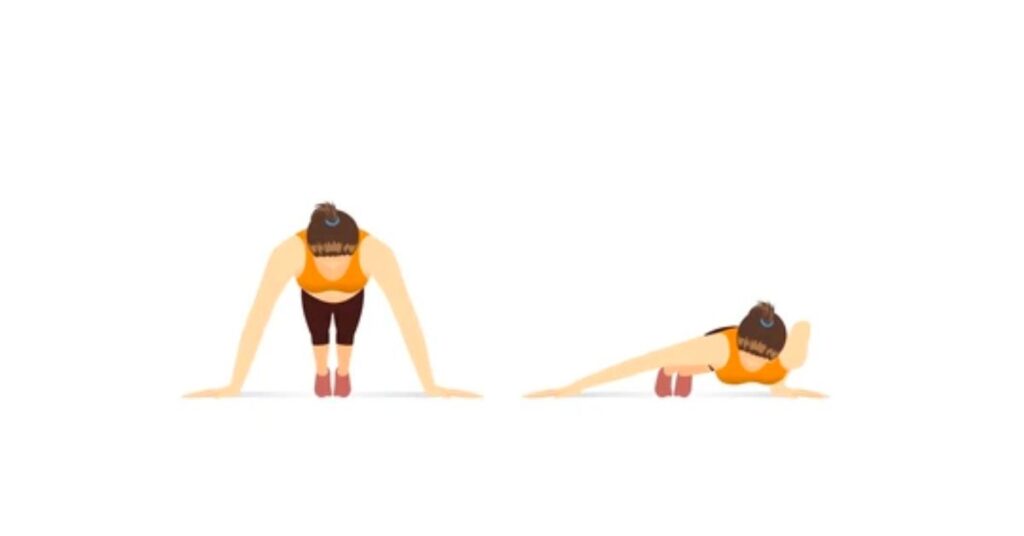
Steps:
- In a standard push-up position, shift your weight to one side as you lower your body.
- Push back up and shift your weight to the other side.
Benefits:
- Targets one side of your chest at a time.
- Challenges chest and shoulder stability.
8. One-Arm Push-Ups
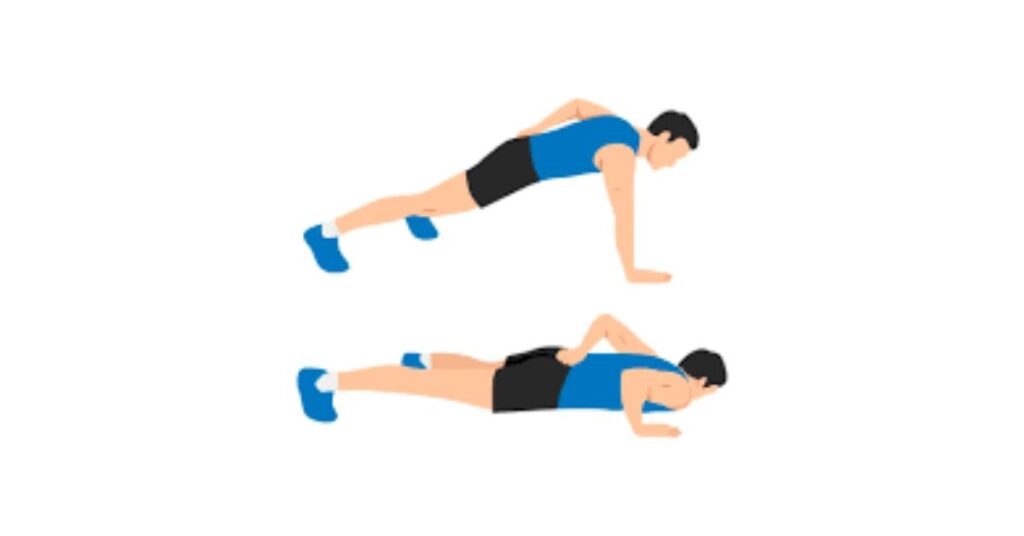
Steps:
- Start in a standard push-up position.
- Lift one hand off the ground and place it behind your back.
- Perform push-ups using only one arm.
Benefits:
- Intensely targets the chest and triceps.
- Enhances core strength and balance.
- Offers a challenging progression.
9. Dive Bomber Push-Ups
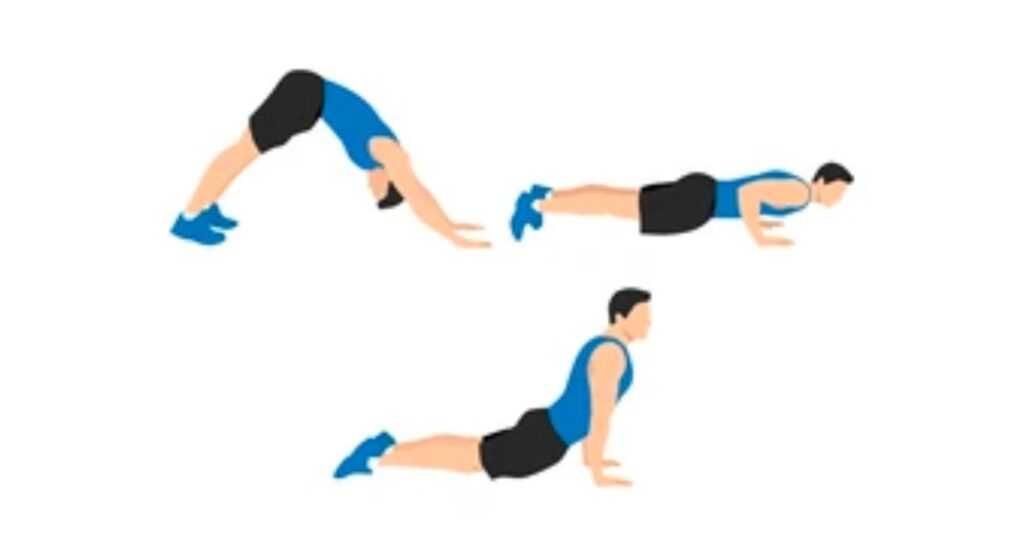
Steps:
- Begin in a downward dog yoga pose.
- Transition into an upward dog pose, arching your back.
- Return to the downward dog position.
Benefits:
- Works chest, shoulders, and back.
- Provides a dynamic stretch and strengthens chest muscles.
10. Chest Dips
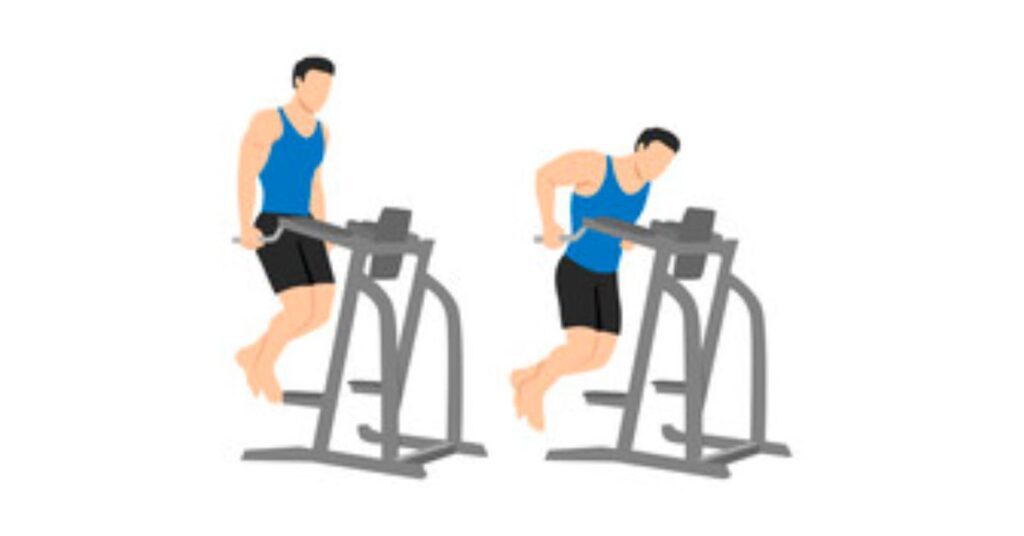
Steps:
- Find parallel bars or sturdy furniture.
- Lower your body by bending your arms, then push back up.
Benefits:
- Focuses on chest, triceps, and shoulders.
- Enhances upper body pushing strength.
11. Plank to Push-Ups
Steps:
- Begin in a plank position.
- Push up onto your hands into a push-up position.
- Lower back down to the plank position.
Benefits:
- Combines plank and push-ups for core and chest engagement.
- Builds shoulder and chest strength.
12. Hindu Push-Ups

Steps:
- Start in a downward dog position.
- Lower your body into an upward dog pose, then push back to a downward dog.
Benefits:
- Provides an excellent chest stretch.
- Works chest, shoulders, and triceps dynamically.
13. Plyometric Push-Ups
Steps:
- Perform a standard push-up, but explode off the ground at the top of the movement.
Benefits:
- Develops explosive chest power.
- Boosts upper body strength and speed.
14. Clapping Push-Ups
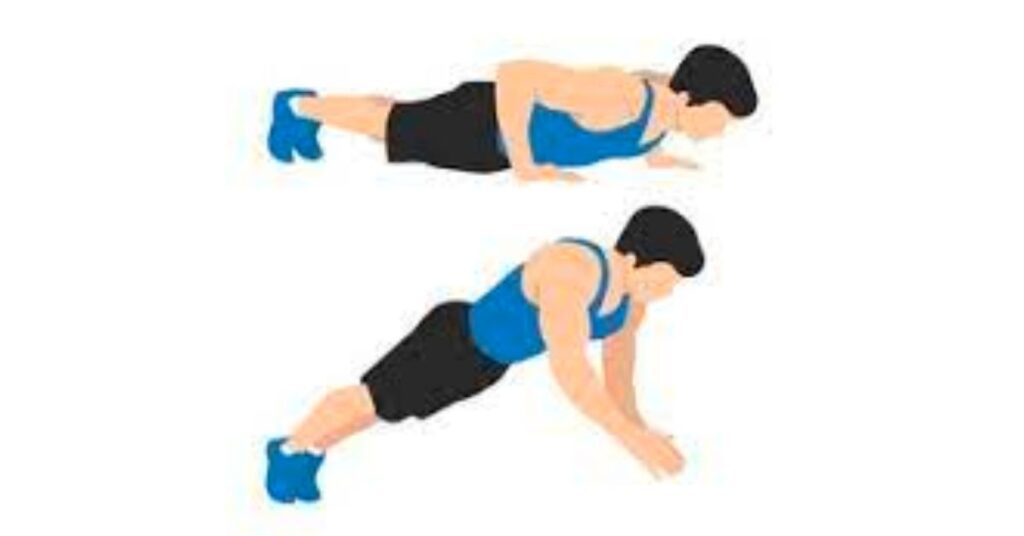
Steps:
- Perform a standard push-up, but explode upward and clap your hands before landing.
Benefits:
- Enhances explosive chest strength and power.
- Adds intensity and excitement to your workouts.
15. Superman Push-Ups
Steps:
- Begin in a push-up position.
- Lower your body while lifting your upper body and legs off the ground.
- Push back up to the starting position.
Benefits:
- Targets chest, shoulders, and lower back.
- Builds upper body and lower back strength.
Fueling Your Calisthenics Journey: Nutrition Tips for Optimal Results
Calisthenics workouts offer an incredible avenue for sculpting your physique and elevating your fitness levels.
However, here’s the secret ingredient: coupling your bodyweight exercises with the right nutritional choices can propel your progress to new heights. Let’s dive into how:
- Balance Is the Key: Your calisthenics diet should strike a harmonious balance. Incorporate a blend of lean proteins, carbohydrates, and healthy fats into your meals. Proteins facilitate muscle repair and growth, while carbs furnish energy for your workouts.
- Harness the Power of Protein: Proteins are the fundamental building blocks of muscle. Include sources such as chicken, turkey, fish, beans, and tofu in your dietary repertoire. Additionally, protein shakes can be a convenient post-workout recovery boost.
- Embrace Carbs: Carbohydrates stand as your body’s primary energy source. Opt for complex carbohydrates like whole grains, brown rice, and quinoa. They supply sustained energy for your workouts and daily activities.
- Fuel Up with Healthy Fats: Don’t shy away from healthy fats. Avocados, nuts, and olive oil are excellent choices. They contribute to hormone production and overall well-being.
- Hydrate, Hydrate, Hydrate: Maintaining proper hydration is paramount. Water aids in digestion, metabolism, and sustaining energy levels during workouts. Aim for at least eight glasses a day, and increase intake if you’re perspiring profusely during calisthenics.
- Timing Matters: Pay heed to meal timing. Consuming a well-rounded meal 2-3 hours before your workout can provide the necessary energy boost. After exercising, refuel with a combination of protein and carbs to aid in recovery.
- Portion Control: Keep an eye on portion sizes. Overindulging, even in healthy foods, can impede your weight loss objectives. Stay attuned to your body’s signals of hunger and fullness.
- Plan Ahead: Meal preparation can be a game-changer. Strategically planning your meals and snacks can help you adhere to your calisthenics dietary plan, especially when life gets busy.
- Listen to Your Body: Above all, listen to your body. Individual nutritional needs vary. Be mindful of how your body reacts to different foods and adjust your choices accordingly.
Weight Loss with a Calisthenics Diet Plan: The Winning Formula
If your aim is weight loss, harmonize your calisthenics workouts with a meticulously designed diet.
Calisthenics effectively burns calories, and a well-balanced diet complements these efforts.
Strive for a modest calorie deficit, where your calorie intake is slightly lower than your expenditure, to shed those excess pounds.
Conclusion
Congratulations on embarking on your journey into calisthenics. Throughout our exploration of bodyweight workouts, we’ve unveiled their remarkable advantages and discovered how nutrition can amplify your fitness aspirations, including the potential for weight loss through a calisthenics diet plan.
Calisthenics empowers you to wield your body as a transformative tool. It’s not just about building muscles; it’s about fostering strength, resilience, and unwavering determination.
Remember, progress is a voyage, not a sprint. Consistency and patience are your steadfast companions. Whether your goal is to develop a robust chest, shed weight, or maintain your fitness, calisthenics molds itself to your requirements.
As you continue on this path, harmonize your workouts with proper nutrition. Your odyssey in calisthenics serves as a testament to your commitment to personal growth and well-being.
The road may present challenges, but with every exercise, you edge closer to your finest self. Persist, strive, and have faith in your body’s boundless potential. Your calisthenics journey is merely commencing, and the best is yet to come.

